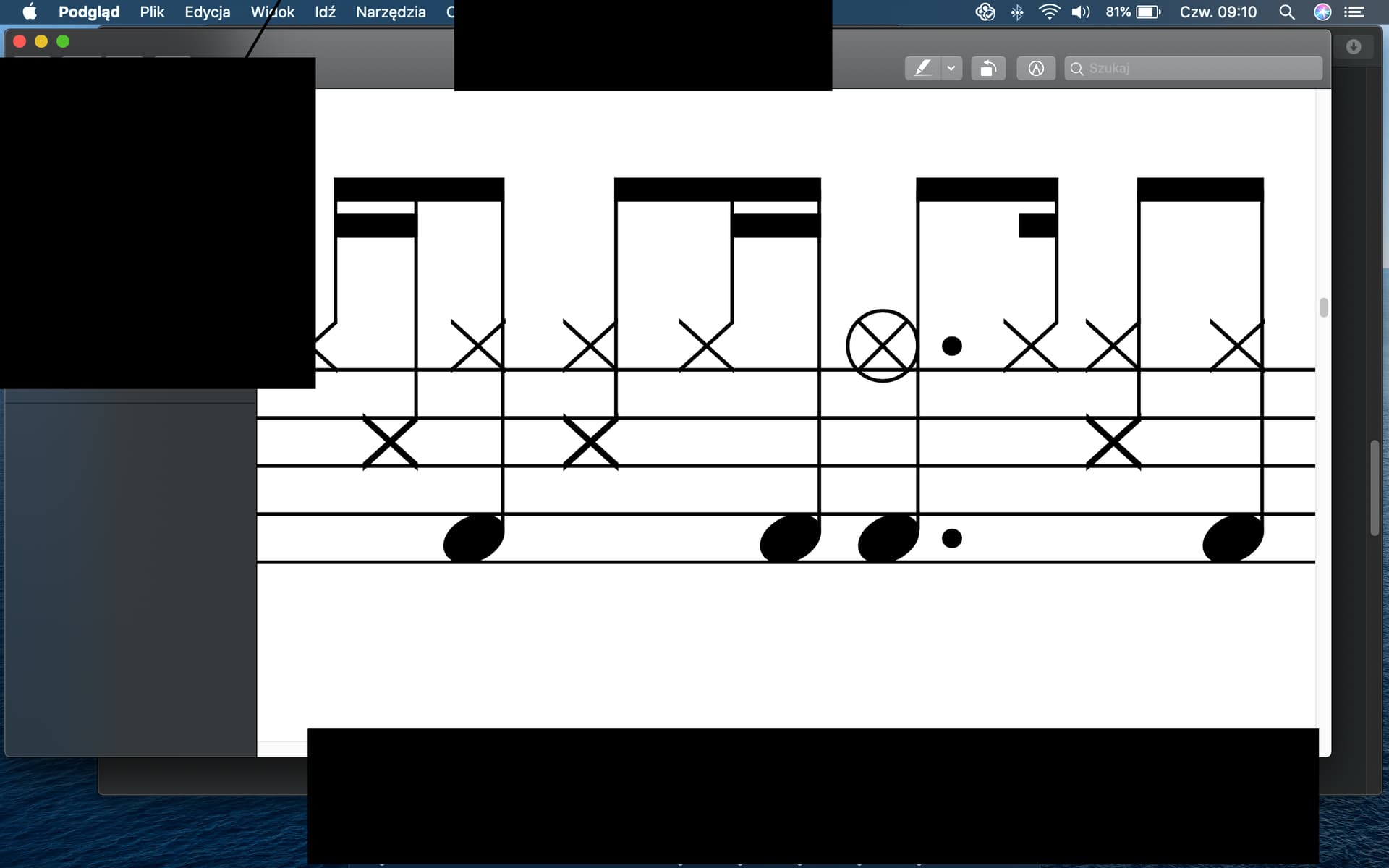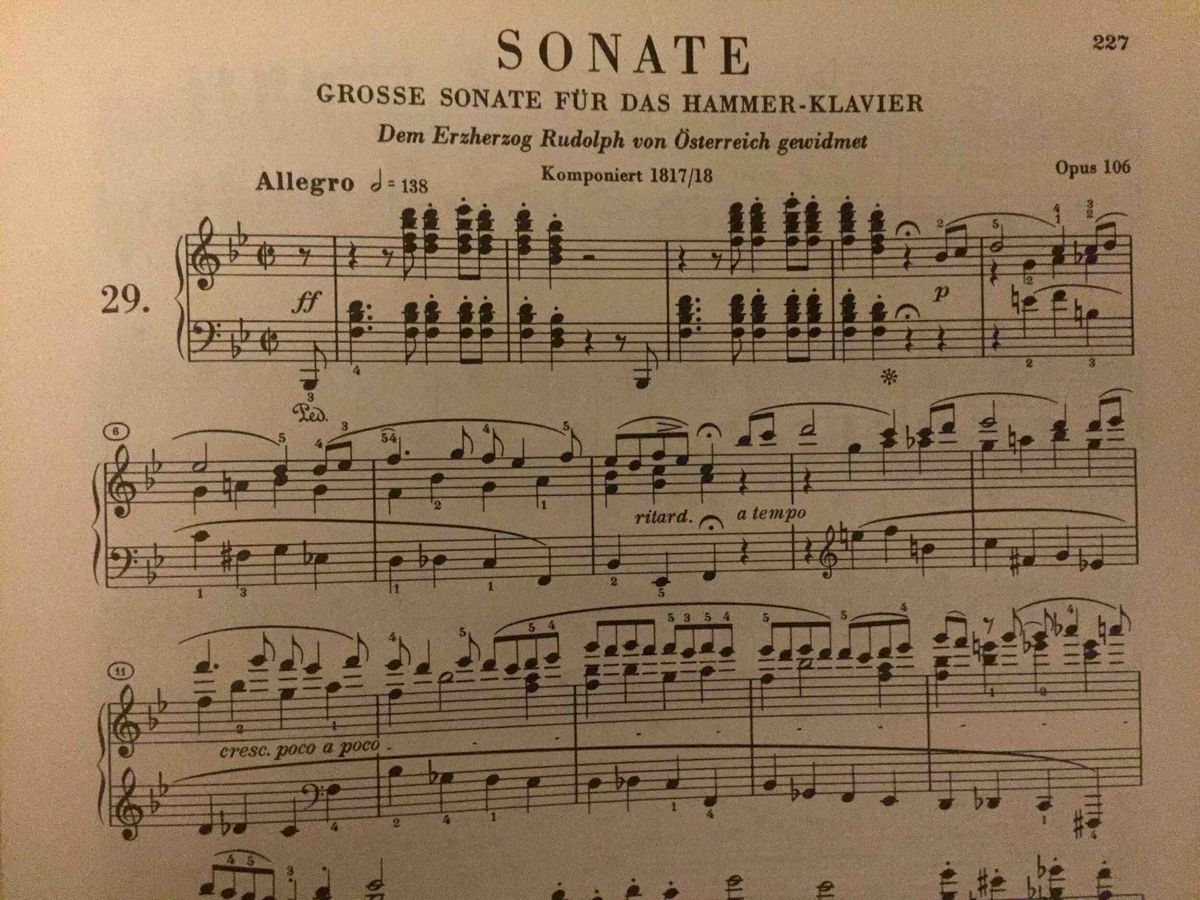Home>Production & Technology>Music Theory>What Does A Borrowed Harmony Mean In Music Theory


Music Theory
What Does A Borrowed Harmony Mean In Music Theory
Published: January 31, 2024
Discover the meaning of "borrowed harmony" in music theory and its significance. Dive into the world of music theory and explore this captivating topic.
(Many of the links in this article redirect to a specific reviewed product. Your purchase of these products through affiliate links helps to generate commission for AudioLover.com, at no extra cost. Learn more)
Table of Contents
Introduction
Music theory is a vast and fascinating field that encompasses various concepts and principles. One such concept that adds depth and complexity to musical compositions is harmony. Harmony refers to the combination of multiple tones or chords played simultaneously to create a pleasing sound.
In music theory, harmony plays a crucial role in enhancing a piece’s emotional impact and aesthetic appeal. It provides the backbone for the melody, adding richness and texture to the overall musical experience. While traditional harmonies are often derived from the underlying key or scale, musicians and composers sometimes utilize borrowed harmony to introduce unexpected yet captivating chord progressions.
Borrowed harmony, also known as modal interchange or modal mixture, involves borrowing chords or progressions from parallel keys or modes that share the same tonic note. This borrowing creates a unique harmonic flavor, adding tension, surprise, and emotional depth to the composition.
The origins of borrowed harmony can be traced back to classical music, where composers began experimenting with borrowing chords from different modes to evoke specific moods and emotions. Over time, the use of borrowed harmony expanded to different genres, including jazz, pop, and rock. Today, it is a common tool used by musicians and composers to add complexity and sophistication to their compositions.
This article will explore the concept of borrowed harmony in music theory, delve into its origins, provide common examples of its usage, and analyze its application and benefits. Whether you are a music enthusiast, a composer, or a student of music theory, understanding borrowed harmony will equip you with the knowledge to appreciate and incorporate this fascinating harmonic technique into your musical endeavors.
Definition of Harmony
In music theory, harmony refers to the vertical aspect of music, involving the combination of multiple tones or chords played simultaneously. It is the art of organizing and arranging different pitches to create a harmonious and pleasing sound. Harmony adds depth, richness, and texture to a musical composition, providing support and context for the melody.
Harmony is built upon the foundation of scales and chords. A scale is a set of ordered pitches, typically consisting of seven notes within an octave. Chords, on the other hand, are groups of three or more notes played together. They are constructed by selecting specific pitches from a scale and stacking them in intervals such as thirds.
In traditional tonal music, harmony revolves around the concept of a tonic, which is the central pitch or home base of a piece. The tonic establishes the key of the composition, and harmony is built by organizing other pitches and chords around it. Various chord progressions, modulations, and cadences are used to create tension, release, and resolution within a piece.
Harmony can be classified into different types based on its tonal characteristics and chord structures. Common types of harmony include major harmony, minor harmony, modal harmony, chromatic harmony, and more. Each type provides its unique emotional quality and musical color.
While traditional harmony is derived from the underlying key or scale of a composition, borrowed harmony introduces unexpected or altered chords from parallel keys or modes. This adds complexity and variety to the harmonic progression, creating interest and tension for the listener.
Understanding harmony is essential for musicians, composers, and music theorists as it enhances their ability to analyze, interpret, and create music. By manipulating harmony, musicians can evoke different emotions, create unique harmonies, and push the boundaries of musical expression.
Borrowed Harmony Explained
Borrowed harmony, also known as modal interchange or modal mixture, is a harmonic technique that involves borrowing chords or progressions from parallel keys or modes that share the same tonic note. It adds depth, complexity, and emotional intrigue to a musical composition by introducing unexpected harmonies that deviate from the established key.
When using borrowed harmony, the composer or songwriter incorporates chords or chord progressions that are typically not found within the diatonic scale of the current key. These borrowed chords are borrowed from the corresponding mode or key with the same tonic, resulting in a unique harmonic color.
For example, in a composition in the key of C major, the composer may borrow chords from the parallel key of C minor. By introducing chords such as Cm, Fm, or Gm from the C minor scale, the composer creates a subtle shift in tonality, bringing a touch of melancholy or tension to the otherwise major-key composition.
The borrowed chords can be inserted seamlessly into the composition, resulting in smooth and natural transitions, or they can be used to create contrasting moments of tension and release. This technique allows composers to explore different tonalities, evoke specific emotions, and create harmonic surprises for the listener.
Furthermore, borrowed harmony can be applied to various sections of a composition, such as the verse, chorus, or bridge, to give each section its unique character. It allows for musical exploration and experimentation while still maintaining a cohesive overall structure.
Borrowed harmony can be used in both simple and complex ways. Simple usage involves borrowing a single chord from the parallel key, while more complex usage can involve borrowing multiple chords or even an entire chord progression. The extent of borrowed harmony depends on the composer’s artistic intentions and the desired emotional impact.
By incorporating borrowed harmony, musicians and composers can elevate their compositions, making them more intriguing, unpredictable, and emotionally charged. It allows for creative expression and adds a dynamic layer to the harmonic framework, capturing the listener’s attention and creating a memorable musical experience.
Origins of Borrowed Harmony
The origins of borrowed harmony can be traced back to classical music, where composers began experimenting with borrowing chords from different modes to create unique and expressive harmonies. The concept of borrowing chords from parallel keys or modes emerged as composers sought to push the boundaries and add complexity to their compositions.
One of the earliest examples of borrowed harmony can be found in the works of composers such as Johann Sebastian Bach and his contemporaries. They explored the use of chromaticism and borrowed chords to create tension and bring emotional depth to their compositions.
During the Romantic period, composers like Claude Debussy and Richard Wagner further expanded the use of borrowed harmony. Debussy, known for his impressionistic style, incorporated modal interchange to create ethereal and dream-like atmospheres in his compositions. Wagner, on the other hand, used borrowed chords to enhance the dramatic impact of his operas, intensifying emotions and emphasizing specific moments.
With the rise of jazz and popular music in the 20th century, borrowed harmony became even more prevalent. Jazz musicians, such as Duke Ellington and Thelonious Monk, utilized borrowed chords to add harmonic complexity and create fresh and unexpected sounds. Similarly, popular music artists, including The Beatles and Radiohead, explored modal interchange to push the boundaries of traditional songwriting.
The use of borrowed harmony has continued to evolve and expand in contemporary music as well. Artists in various genres, ranging from pop and rock to hip-hop and electronic music, experiment with borrowing chords to create unique and captivating harmonic progressions.
Today, musicians and composers have access to a vast repertoire of harmonic techniques and resources. The exploration and integration of borrowed harmony into compositions allow for artistic expression, innovation, and the creation of rich and dynamic musical landscapes.
The origins of borrowed harmony may lie in the classical era, but its continued use and evolution across various musical genres have solidified its place as a powerful and versatile tool in the realm of music composition and theory.
Common Examples of Borrowed Harmony
Borrowed harmony is a versatile technique that can be found in a wide range of musical genres and compositions. Here are some common examples of borrowed harmony:
- Modal Interchange: One of the most prevalent forms of borrowed harmony is modal interchange. This involves borrowing chords from the parallel major or minor key. For example, in a song written in the key of C major, the composer may borrow chords from C minor, such as Cm, Fm, or Gm, to add a touch of melancholy or mystery.
- Borrowing from the Relative Major/Minor: Another common approach is to borrow chords from the relative major or minor key. For instance, in a composition in A minor, the composer may borrow chords from its relative major key, C major, such as C, F, or G, to introduce a brighter or more uplifting sound.
- Chromatic Mediants: Chromatic mediants are another popular form of borrowed harmony. This refers to borrowing chords from the parallel scale that is a third away from the current key. For example, in the key of C major, borrowing chords from the key of E major or E minor, such as Em or Am, can create a sense of surprise and evoke a dramatic effect.
- Secondary Dominants: Secondary dominants involve borrowing chords that act as temporary dominant chords to lead to a specific target chord. For instance, in the key of C major, introducing a D7 chord (V/V) before resolving to G7 (V) can create tension and add excitement to the harmonic progression.
- Extended Borrowed Chord Progressions: In some cases, composers may borrow entire chord progressions from other keys or modes. This can be seen in jazz and fusion genres, where more complex harmonic structures are used. For example, borrowing a ii-V-I progression from a different key or mode can add harmonic complexity and sophistication.
These are just a few examples of the many possibilities when it comes to using borrowed harmony. The technique offers endless opportunities for composers and musicians to explore different tonalities, create tension and release, and add variety to their compositions. By incorporating borrowed harmony, musicians can surprise and delight their listeners with unexpected harmonic twists and turns.
Analysis and Application of Borrowed Harmony
When working with borrowed harmony, it is essential to analyze its application and understand its impact on a composition. By analyzing the borrowed chords and their relationship to the original key, composers can make informed decisions about their placement and usage. Here are some aspects to consider when analyzing and applying borrowed harmony:
Functional Analysis: Analyzing the function of borrowed chords within a composition is crucial. Understanding how the borrowed chords relate to the current key and their role in the harmonic progression helps maintain coherence and balance. For example, a borrowed chord may serve as a predominant leading to a standard dominant chord, creating tension and resolution.
Voice Leading and Part Writing: Paying attention to voice leading and part writing is crucial when using borrowed harmony. Ensuring smooth and logical melodic lines and avoiding voice-leading errors enhances the overall musicality and integrity of the composition. Resolving borrowed chords in a manner that leads to harmonically stable chords creates a satisfying resolution.
Emotional Impact: Consider the emotional impact of the borrowed chords in relation to the overall composition. Borrowed chords can evoke specific feelings and moods, adding depth and nuance to the musical expression. For example, borrowing minor chords in a major key can introduce a sense of melancholy or introspection.
Contextual Application: How and where borrowed harmony is applied within a piece can greatly influence the overall effect. Composers can strategically introduce borrowed chords at key moments to create contrast, build tension, or highlight specific sections. Experimenting with different placements can lead to unique and impactful musical experiences.
Artistic Intentions: The artistic intentions of the composer play a significant role in the application of borrowed harmony. Understanding the desired outcome and musical vision helps guide the decision-making process. Whether using borrowed harmony to surprise listeners, evoke specific emotions, or showcase musical innovation, aligning the application with the overall artistic intent is essential.
Remember, the application of borrowed harmony is a creative choice and should be approached with an understanding of the harmonic context while allowing for personal artistic expression. By carefully analyzing and applying borrowed harmony, musicians and composers can elevate their compositions, captivate their audience, and create unique and memorable musical experiences.
Benefits and Challenges of Using Borrowed Harmony
Using borrowed harmony in composition offers several benefits that can enhance the musical experience. However, it also comes with a set of challenges that composers and musicians should be aware of. Let’s explore the benefits and challenges of using borrowed harmony:
Benefits:
- Enhanced Musical Expressiveness: Borrowed harmony adds depth, complexity, and emotional intrigue to a composition. By introducing unexpected chord progressions, it stimulates the listener’s ears and creates a more engaging musical experience.
- Expanded Musical Palette: Borrowed harmony allows for a broader range of tonal possibilities. Composers can venture into different key areas, explore alternative modes, and experiment with unique harmonic progressions, expanding their creative palette and enabling innovative musical expression.
- Emotional Impact: Borrowed harmony has the power to evoke specific emotions and moods. It can create tension, evoke nostalgia, or bring out contrasting emotions. By leveraging borrowed chords, composers can craft harmonies that elicit a particular emotional response from the listener.
- Musical Surprises: Borrowed harmony introduces unexpected harmonic shifts and surprises. It keeps the listener engaged and attentive, as they anticipate the resolution of borrowed chords and experience the tension-release dynamics created by this technique.
- Artistic Freedom: By incorporating borrowed harmony, composers have the freedom to explore new sonic territories and break away from traditional harmonic conventions. It allows for individual artistic expression, pushing boundaries, and creating unique musical identities.
Challenges:
- Integration and Cohesion: Integrating borrowed harmony seamlessly into a composition can be challenging. It requires careful attention to voice leading, part writing, and harmonic progression to ensure that the borrowed chords fit within the overall musical context and maintain a coherent sound.
- Balance and Context: Balancing the use of borrowed harmony with the rest of the composition can be a delicate task. It is important to consider the balance between familiar and unfamiliar harmonic elements to ensure that the borrowed chords do not overpower or overshadow the core musical ideas.
- Complexity and Clarity: Introducing borrowed harmony can add complexity to a composition, making it more challenging for the listener to follow and understand the harmonic progression. Balancing complexity with clarity is essential to ensure that the borrowed chords serve the musical purpose without overwhelming the listener.
- Artistic Intentions: While borrowed harmony offers artistic freedom, it can also present a challenge in terms of translating one’s artistic intentions successfully. Composers need to be clear about their vision and ensure that the borrowed chords align with the intended emotional impact and overall message of the composition.
- Experimentation and Musical Taste: While borrowed harmony encourages experimentation, it may not always align with everyone’s musical taste. It is essential to consider the target audience and the desired musical aesthetic to ensure that the incorporation of borrowed harmony resonates with the intended listeners.
Despite the challenges, the benefits of using borrowed harmony outweigh the potential difficulties. With careful consideration, analysis, and experimentation, composers can harness the power of borrowed harmony to create captivating and emotionally impactful compositions.
Conclusion
Borrowed harmony is a fascinating and powerful tool in music theory that allows composers to explore new tonalities, evoke specific emotions, and create musical surprises. By borrowing chords or progressions from parallel keys or modes, composers can add depth, complexity, and intrigue to their compositions.
Throughout history, borrowed harmony has been used by composers from various genres to push the boundaries of traditional harmonic conventions. From the classical era to modern times, the technique has evolved and expanded, finding its place in jazz, pop, rock, and other genres.
The benefits of using borrowed harmony are numerous. It enhances expressiveness, expands the musical palette, creates emotional impact, introduces surprises, and provides artistic freedom. However, it also comes with challenges, such as integration, balance, complexity, and maintaining artistic intentions.
By carefully analyzing and applying borrowed harmony, composers can achieve a harmonic balance that complements their musical vision. By considering functional analysis, voice leading, emotional impact, and contextual application, musicians can utilize borrowed harmony to elevate their compositions and captivate their listeners.
Understanding the origins, common examples, and benefits and challenges of borrowed harmony empowers musicians to craft harmonically rich and engaging compositions. Whether borrowing from parallel keys, employing chromatic mediants, or utilizing secondary dominants, borrowed harmony offers endless possibilities for creating unique and captivating musical experiences.
Embracing borrowed harmony allows musicians to break free from traditional harmonic constraints, explore new sonic territories, and infuse their compositions with an element of surprise and intrigue. By incorporating this harmonic technique, composers can captivate their audience, evoke emotional responses, and leave a lasting impression through their musical creations.











